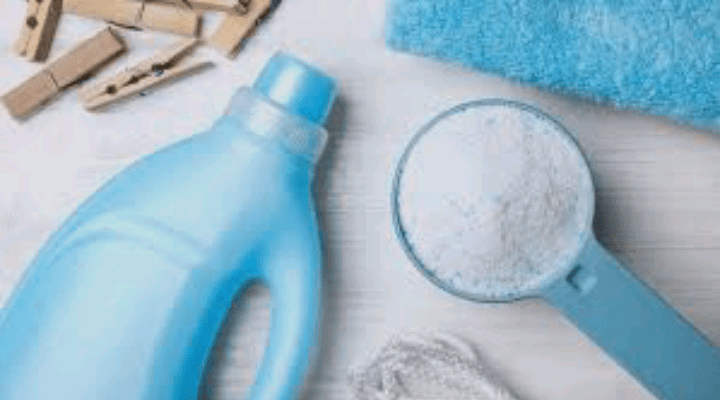Are you tired of the ever-growing costs of commercial laundry detergents that seem to do more harm than good to both your wallet and the environment? Look no further – the solution might be closer than you think. In the realm of DIY solutions, crafting your own laundry detergent emerges as a simple, cost-effective, and eco-friendly alternative to store-bought varieties.
Laundry day, a routine chore for many, often involves reaching for a jug of detergent off the store shelf without much thought. But what if the key to a sustainable and economical laundry routine lies in your own hands?
The concept of DIY laundry detergent opens a door to a world where you not only have control over what goes into your detergent but also get to enjoy the therapeutic satisfaction of creating something practical from scratch.
In this guide, we’ll walk you through the process of making your own laundry detergent, step by step. From selecting the right ingredients to customizing the formula to suit your preferences, we’ll demystify the DIY approach, making it accessible to everyone, regardless of their crafting skills.
Join us on this journey towards a greener, more budget-friendly laundry routine. Discover the joy of concocting your personalized detergent, knowing exactly what goes into it and, most importantly, what doesn’t.
Say goodbye to harsh chemicals, excessive spending, and environmental concerns, and say hello to a DIY laundry detergent that not only cleans your clothes but also cleans up the way you approach laundry day. Let’s embark on this simple yet transformative venture together.
Read also: DIY Halloween Costumes: Unleashing Your Inner Creativity
DIY Laundry Detergent

Understanding the Why: The Benefits of DIY Laundry Detergent
- Economic Savings: Commercial laundry detergents can be expensive, and their prices seem to rise steadily. By making your own detergent, you gain control over the cost, potentially saving a significant amount in the long run. The ingredients are often budget-friendly and readily available, making this a cost-effective alternative.
- Environmentally Friendly: Traditional laundry detergents often contain harsh chemicals that can harm aquatic ecosystems and contribute to water pollution. DIY laundry detergent allows you to choose eco-friendly ingredients, reducing your carbon footprint and promoting a more sustainable lifestyle.
- Customization: Everyone’s laundry needs are different. Some may need a detergent that’s gentle on sensitive skin, while others might require a formula that combats tough stains. Crafting your own detergent enables you to tailor the ingredients to meet your specific needs, ensuring a personalized touch to your laundry routine.
Ingredients and Materials
Before going into the DIY process, gather the following ingredients and materials:
- Bar Soap: Choose a mild, unscented soap or one with a fragrance you enjoy. Castile soap is a popular choice due to its gentle nature and versatility.
- Washing Soda: This ingredient boosts the detergent’s cleaning power. It can usually be found in the laundry aisle of your local grocery store.
- Borax: Borax is a natural mineral that acts as a cleaning booster and helps to soften water. It is available in most grocery or hardware stores.
- Essential Oils (Optional): Add a few drops of your preferred essential oil for a pleasant fragrance. Lavender, tea tree, or eucalyptus are popular choices.
- Grater or Food Processor: To finely grate the bar soap, you’ll need a kitchen grater or a food processor with a grating attachment.
- Large Mixing Bowl: Use a bowl large enough to mix and store your detergent.
- Storage Container: Choose an airtight container to store your detergent. An old detergent container or a glass jar works well.
The DIY Process
Read also: Photos: Remember The Man Who Trekked From Lagos To Abuja in 2015, See What Happened to Him!
Now, let’s embark on the journey of crafting your own DIY laundry detergent:
- Grate the Soap: Begin by grating the bar soap using a grater or a food processor. Aim for fine shavings to ensure easy dissolving in water.
- Mixing the Ingredients: In your large mixing bowl, combine the grated soap with equal parts washing soda and borax. A common ratio is 1 cup of each, but you can adjust based on your preferences and laundry needs.
- Add Essential Oils (Optional): If you desire a pleasant scent, add a few drops of your chosen essential oil to the mixture. Stir thoroughly to distribute the fragrance evenly.
- Storage: Transfer your homemade detergent into a storage container. Make sure the container is airtight to preserve the detergent’s effectiveness.
Using Your DIY Laundry Detergent
Now that you’ve created your own detergent, it’s time to put it to use:
- Dosage: Use approximately 2-3 tablespoons of your DIY detergent per load. Adjust the quantity based on the size of your laundry load and the hardness of your water.
- Pre-dissolving: For optimal dissolving, especially in cold water, consider dissolving the detergent in a cup of hot water before adding it to the washing machine.
- High-Efficiency (HE) Machines: This DIY detergent is compatible with high-efficiency machines. Ensure that the detergent dissolves well to prevent any residue buildup.
- Stain Treatment: For tougher stains, pre-treat the affected areas with a small amount of the detergent before washing. This can enhance the stain-removing power of your DIY solution.
Tips for Success
- Experiment with Ratios: Finding the perfect ratio of soap, washing soda, and borax may take some trial and error. Experiment with different ratios to determine what works best for your laundry needs.
- Water Softening: If you live in an area with hard water, consider adding more washing soda to help soften the water and improve detergent performance.
- Label Your Container: To avoid confusion, label your storage container with the ingredients and ratios used. This will be helpful when you decide to make another batch.
- Storage Conditions: Store your DIY detergent in a cool, dry place to prevent clumping. If clumping occurs, simply break it apart before use.
Read also: Definitions and Sources of Biomedical Special Waste
